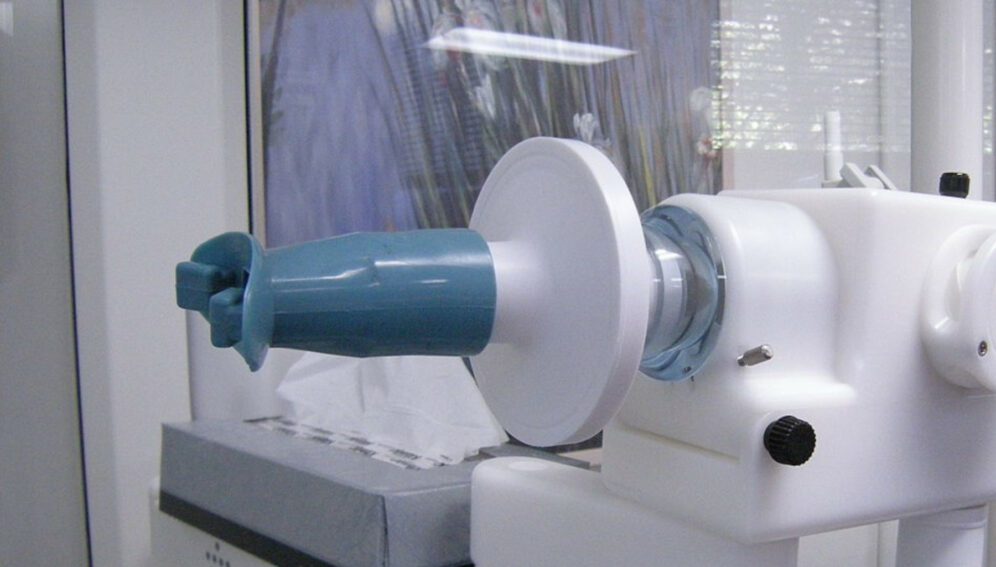24/01/22
Chronic lung disease can be treated if caught early

By: Sanjeet Bagcchi
Send to a friend
The details you provide on this page will not be used to send unsolicited email, and will not be sold to a 3rd party. See privacy policy.
[NEW DELHI] Chronic obstructive pulmonary disease (COPD), a group of lung conditions that includes bronchitis and emphysema, can be treated if caught early by simple screening, new research suggests.
Chronic obstructive pulmonary disease, marked by persistent and progressive respiratory symptoms, including difficulty in breathing, ranks as the third leading cause of death worldwide. COPD accounted for 3.23 million deaths in 2019, according to the WHO.
The researchers who published their findings January in JAMA noted that most of the mortality and morbidity from chronic obstructive pulmonary disease takes place in the low- and middle-income countries (LMICs).
According to the researchers, diagnosis and treatment of COPD in the LMICs is challenging for limited availability of spirometry, affordable medicines, specialists and appropriate guidelines. Spirometry is a test to measure lung function and is used to diagnose asthma and other lung conditions.
The multi-country study looked at the accuracy of three simple tools for the screening of COPD in three different LMIC settings, involving 10,709 adults in Nepal, Peru, and Uganda. The researchers noted that people with high-risk of suffering COPD could be found within 7—8 minutes by using a questionnaire and Peak Expiratory Flow assessment, to test how fast a person can exhale, a release said.
COPD prevalence varied across sites. It was three per cent in Lima, Peru, seven per cent in Nakaseke, Uganda and 18 per cent in Bhaktapur, Nepal. Overall, 95 per cent of cases were previously undiagnosed. “The screening instruments performed similarly within each population setting and were feasible to deliver using trained research staff, taking an average of 7—8 minutes,” the press release added.
“Our study confirms a high burden of previously undiagnosed, clinically significant COPD in low- and middle-income country settings,” said John Hurst, corresponding author of the study and professor of respiratory medicine at University College of London, He told SciDev.Net that, “people at high risk for COPD can be identified using simple screening tools”.
“People at high risk for COPD can be identified using simple screening tools”
John Hurst, University College of London
Hurst said there needed to be greater focus on identifying and treating chronic respiratory disease in low- and middle-income countries. “We need to show that COPD screening tools can be implemented in routine LMIC healthcare settings, demonstrate the benefit of screening to individuals and the cost-effectiveness to policy makers.”
“The study aimed to screen populations for COPD via questionnaires and peak expiratory flow rate, which indicates any obstruction in airflow and adequacy in ventilation,” said Sushmita Roychowdhury, director of pulmonology at Fortis Hospital in Kolkata, India. She added that while this method can unearth obstructive respiratory disease, spirometry would still be needed to confirm reversibility and severity in order to guide treatment.
“In low- and middle-income country settings, long term treatment of chronic diseases is successful only in symptomatic patients as they continue treatment regularly. Moreover, multiple inhalers impede compliance further,” she told SciDev.Net.
According to Roychowdhury, biomass fuel exposure and aerial pollution were major reasons for early non-smoking COPD in low- and middle-income countries. “Education, early diagnosis and providing multi-drug single inhalers with few add on devices can help tackle COPD. Enabling or training community doctors to follow up, reassess and optimize treatment would certainly help.”
This piece was produced by SciDev.Net’s Asia & Pacific desk.















